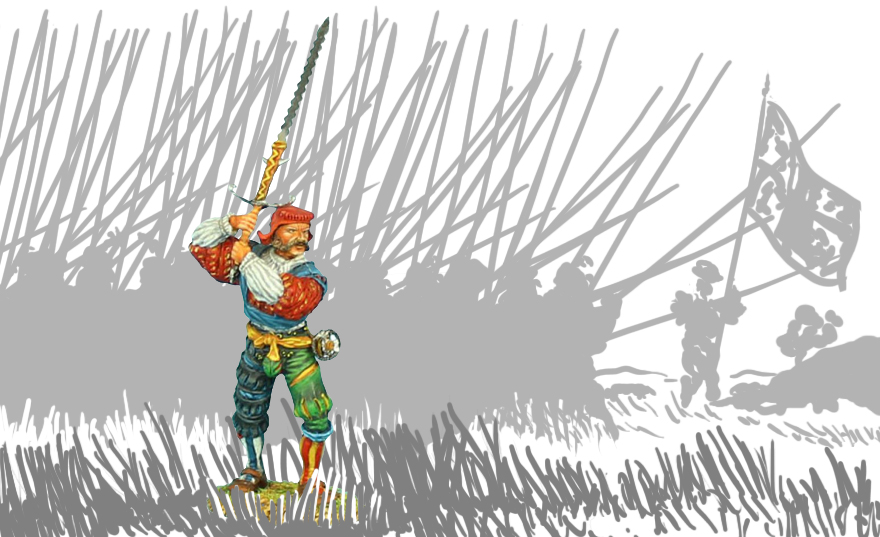The Fighting Peacocks
One of the most visually colorful and extravagant soldiers on the late 15th and early 16th century battlefields certainly was the Landsknecht. Those professional troops were more than mercenaries. They had a lifestyle adapted to long expeditions, special social rules, a culture of their own... and we have the REN019 - German Landsknecht Doppelsoldner.
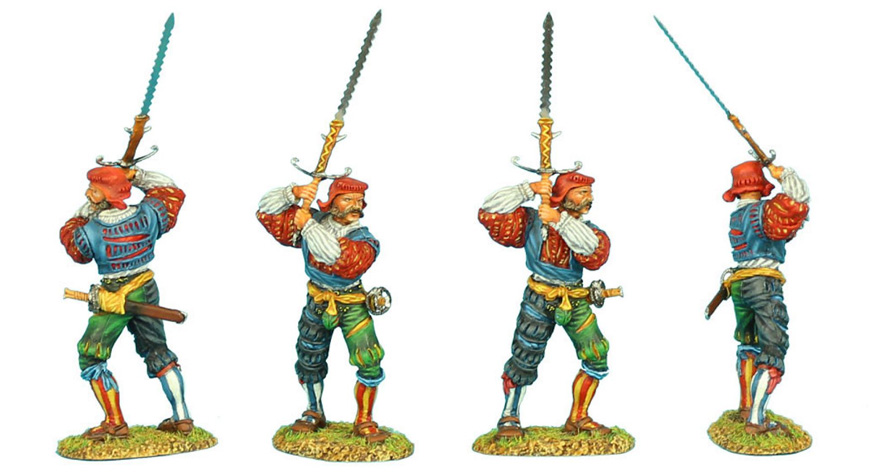
As we can see with this toy soldier, the visual style of the Landsknecht is nothing but sober. When Maximilian I von Habsburg created this unit in 1486, he wanted them to stand out on the battlefield. Therefore, he gave them the right to use any color of clothing they wanted as some colors were usually restricted to some social classes. Eventually the Landsknecht became an elite troop and was very successful on most battlefields. With the success came money and with more money came even more extravaganzas. It quickly became a fashion about bragging. Massive quantities of fabric were used by the Landsknechts to create their outfits as it was a visible proof of their success. Most of the used fabric was wool fabric with cut out patterns on it. Long belts that could loop three times around their waist, long ostrich feathers from Africa on top of large hats and ostensive codpieces (some about 14 inches long!) were common things amongst those mercenaries. They took every possible fashion from that time and put it to extremes. This is why today, recreating a Landsknecht costume can be a quite expensive task. The REN019, with the light blue, dark blue, red, yellow, green and white follows every tradition when it comes to Landsknecht fashion.
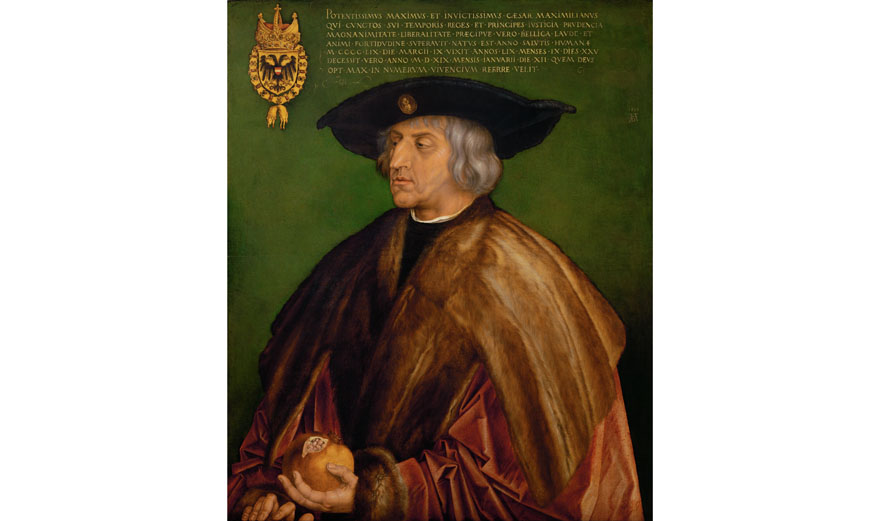
Maximilian I von Habsburg by Albrecht Dürer (1519)
The Landsknechts collection produced by First Legion Ltd is showing the usual types of soldier that was composing the units. Most of the Landsknechts were pikemen fighting in formation. Accompanying them were halberdiers and arquebusiers. Around the high ranking officers and flag bearers were the Doppelsoldners such as the REN019. Those were elite within the elite, serving often as special bodyguards during the battles. They were equipped with a special sword typical of the Landsknechts called a flammenschwert or flamberge in English. This weapon was, once again, a very show off thing with a good psychological effect on the foes. Despite having fancy curves on the blade and looking almost fun to cut things with, it was mainly used as a thrusting weapon. However, it was reported in some accounts that it was also used to sweep areas in view to break enemy formations. In the case of the REN019, we can assume that he is just about to do so.
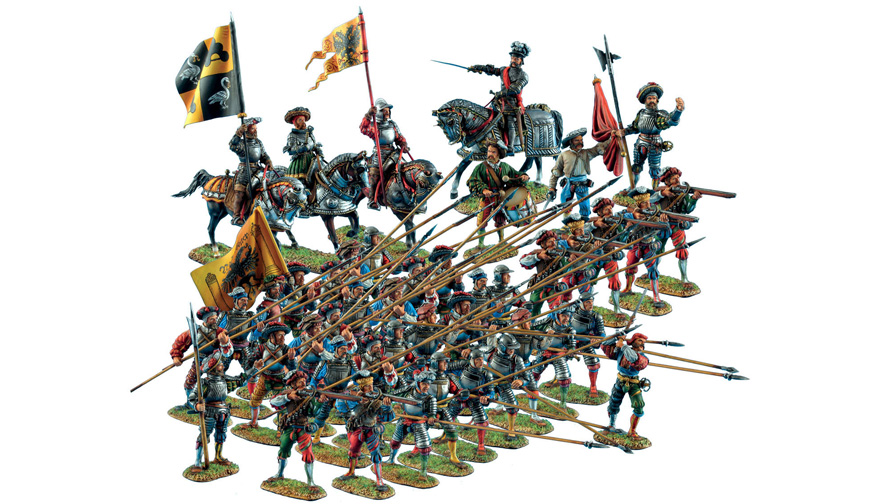
Eventually, the downfall of the Landsknechts happened when firearms became more popular on the battlefields. Landsknechts were troops of pikes and those were never good against ranged weapons. The Spanish Tercios, with their greater firepower and good reputation slowly outclassed them. By 1560, the Landsknechts were not what they once were and their number gradually decreased until they were no more.
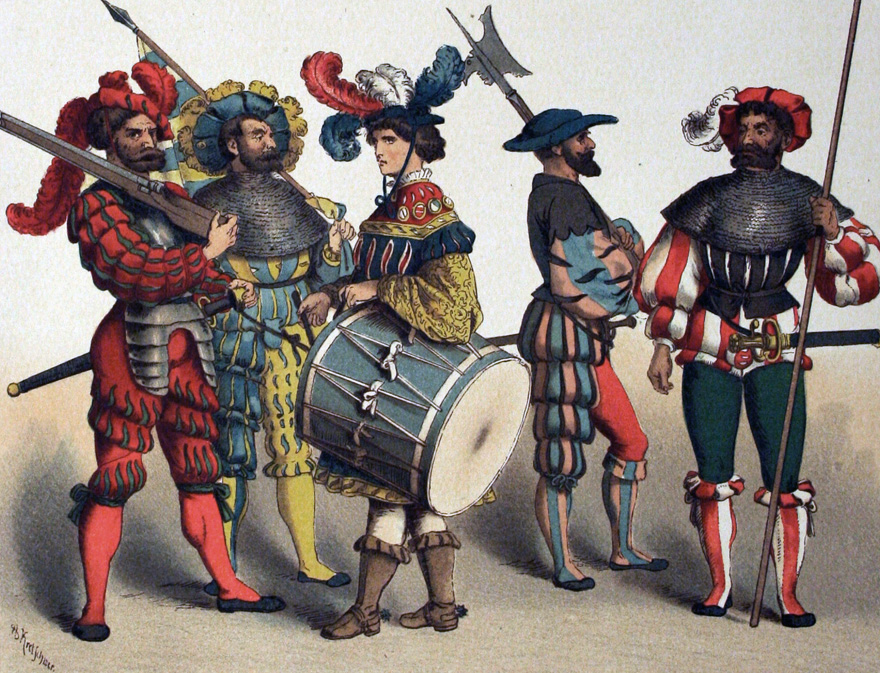
Group of Landsknechts by Albert Kretschmer (1882)
Today, the Landsknecht name is not as known as it should. It’s not often that we see a movie or tv show produced with even a small apparition of one of those mercenaries. However, it still had an impact in some spheres of the pop culture. In the fantasy tabletop game Warhammer, many units of the Freeguild faction are based on the look of the Landsknechts.
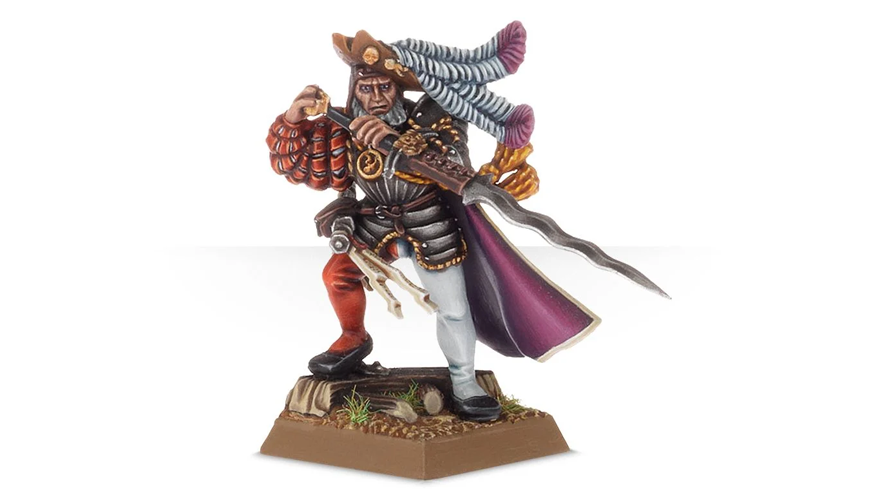
This is not a lansquenet.
In the mid 60’s, the German vocal ensembles Botho-Lucas-Chor recorded an album with various songs inspired by those famous mercenaries. The songs sound a bit like a mix of World War Two German Marches with an odd Ennio Morricone guitar vibe in background. I leave you with this album found conveniently on youtube to judge it while looking at the rest of the Landsknecht collection by First Legion.

 Français
Français
